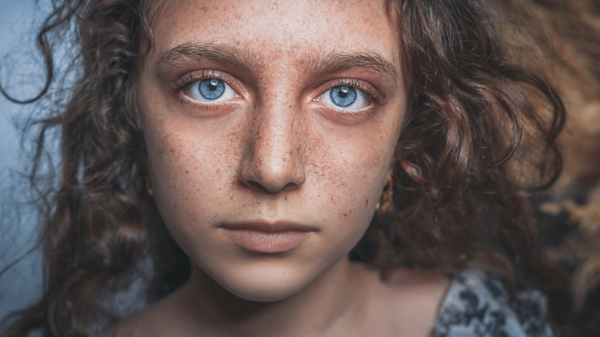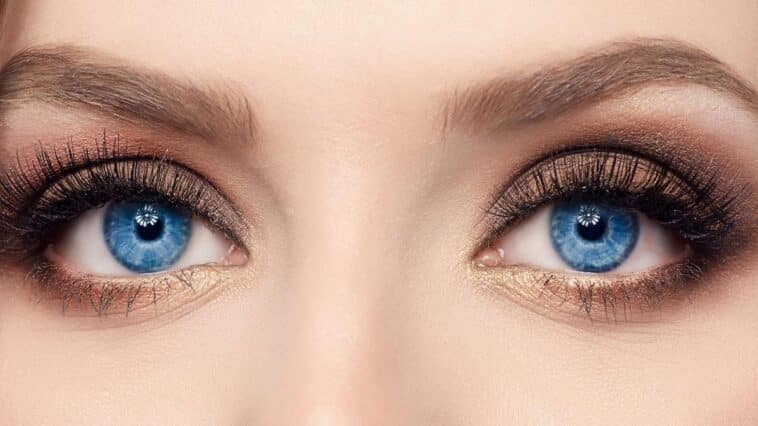Blue eyes are a beautiful and unique physical trait that can be found in humans, animals, and even some plants. They are created by the pigment melanin in the iris, and this pigment is unique to each individual. Blue eyes can come in a range of shades, from a very light blue to a dark, steel blue. Their color can also change depending on lighting, emotions, and even the clothes you wear.
People with blue eyes tend to have a higher sensitivity to light and may be more prone to sunburn or other sun-related damage. In some cases, blue eyes may be a sign of genetic disorders like albinism, but this is usually only the case if accompanied by other symptoms.
There are a few superstitions about blue eyes, the most common being that people with blue eyes have extra strength and magical powers. Although this is mostly just a myth, it is true that blue eyes can make people feel special and unique.
Things You May Not Know About Blue Eyes
Are you looking to learn more about blue eyes? Having blue eyes is a rare and special trait, which is why it’s important to understand its various facts. You can find out what makes them unique compared to other colors of eyes and even learn some interesting history behind the phenomenon. Keep reading to discover the fascinating things you may not know about blue eyes!
Blue Eyes Aren’t Actually Blue
Blue eyes are not actually blue because they do not emit blue light. The eye’s iris contains pigment cells called melanocytes, which determine the color of the iris. In people with blue eyes, the iris contains less melanin, which allows more light to be reflected and scattered by the tissues in the front of the iris. This scattering of light is what gives blue eyes their blue appearance.
It is important to note that the color of the iris can vary from person to person, and the color of the iris is not always an accurate indicator of the amount of melanin present. Some people with blue eyes may have more melanin in their irises than others with brown eyes, for example. In addition, the color of the iris can change over time due to various factors, including aging, disease, and injury.
Blue Eyes Are Sensitive to Light
Blue eyes may be more sensitive to light than brown eyes because they have less pigment in the iris. The pigment in the iris helps to absorb light, and because blue eyes have less pigment, they may be more sensitive to bright light. This sensitivity to light may cause discomfort or irritation in some people with blue eyes, especially when exposed to bright sunlight or other intense light sources.
It is important to note that sensitivity to light is not unique to blue eyes, and people with other eye colors may also experience sensitivity to light. Age, disease, and medications can also affect a person’s sensitivity to light. If you are experiencing discomfort or irritation from bright light, you should consult an eye care professional for advice and treatment.
Your Baby May Not Have Blue Eyes for Life
The color of a baby’s eyes can indeed change over time. Many babies are born with blue eyes, but this is not a reliable indication of the final color of their eyes. Eye color is determined by the amount and type of pigment in the iris and the scattering of light by the iris. The pigment called melanin is responsible for the color of the iris, and the amount of melanin present can vary.
In newborns, the amount of melanin in the iris is usually low, which can cause the eyes to appear blue. As the baby grows and develops, the amount of melanin in the iris can increase, leading to a change in eye color. The final color of the eyes may only be fully apparent once a child is between 3 and 6 months old.
A few factors can affect the color of a baby’s eyes. One factor is genetics. The color of a baby’s eyes is determined by the genes inherited from their parents. A baby may have blue eyes if one or both of their parents have blue eyes, or they may have brown eyes if their parents have brown eyes.
Another factor that can affect eye color is ethnicity. Eye color tends to be darker in people of African, Asian, and Hispanic descent, while people of European descent tend to have lighter eye colors.
In conclusion, it’s not uncommon for a baby’s eye color to change over time. The final color of a baby’s eyes may not be fully apparent until they are several months old, and genetics and ethnicity can play a role in determining eye color.
Blue Eyes Are Rare
Did you know that blue eyes are one of the rarest eye colors in the world? Only about 8-10% of the world’s population has blue eyes. Also, blue eyes are caused by a low amount of melanin in the iris.
Blue eyes are more common in people of European descent, particularly those from Northern and Eastern Europe. They are also found in people of Middle Eastern, African, and Asian descent, but they are less common in these populations.
The genes responsible for eye color are complex, and multiple genes contribute to the final color of the eyes. The gene that codes for the production of melanin, the pigment that gives color to the iris, has many different alleles (variants) that can result in different eye colors. The allele for blue eyes is recessive, meaning a person must inherit two copies of the blue eye allele (one from each parent) for their eyes to appear blue.
Blue eyes are not rare globally, but their prevalence does vary depending on geographical location and ethnicity. They are more common in people of European descent, but they can also be found in people of Middle Eastern, African, and Asian descent.
People with Blue Eyes Have A Common Ancestor
A scientific theory suggests that people with blue eyes may have a common ancestor. According to this theory, a genetic mutation that occurred around 6,000-10,000 years ago in the region of the Black Sea is responsible for the prevalence of blue eyes in some populations today.
The mutation occurred in the gene that codes for the production of melanin, the pigment that gives color to the iris. The mutation reduced the amount of melanin produced, leading to the development of blue eyes. This mutation is thought to have spread through specific populations over time, leading to the prevalence of blue eyes in certain parts of the world today.
It’s important to note that this is just a theory and is not definitively proven. While people with blue eyes may have a common ancestor, many other factors, such as genetics and ethnicity, can influence the development of blue eyes.
In conclusion, the theory that people with blue eyes have a common ancestor is a scientific theory that suggests that a genetic mutation that occurred around 6,000-10,000 years ago in the region of the Black Sea may have led to the prevalence of blue eyes in some populations today. However, this theory has not been definitively proven, and other factors can influence the development of blue eyes.
What Does Eye Color Say About Your Health?

Eye color is a trait that has long been associated with health. Many people believe that the color of your eyes can tell you something about your overall health. While there isn’t any scientific evidence to back up this belief, there are some interesting facts to consider. For example, it has been suggested that people with lighter-colored eyes may be more sensitive to light, making them more prone to headaches and eye strain. Additionally, lighter eyes may be more susceptible to developing nearsightedness or farsightedness than those with darker eyes.
In general health, certain eye colors have been associated with different conditions. For example, those with lighter eyes may have a higher risk of developing autoimmune diseases such as rheumatoid arthritis and lupus. On the other hand, those with darker eyes may have a higher risk of developing certain types of cancer.
It is important to note that these are only correlations, and further research is necessary to draw definitive conclusions. Additionally, eye color is not necessarily an indicator of overall health. Many other factors, such as diet, exercise, and lifestyle, can affect a person’s health.
Ultimately, while eye color may give clues about our health, it is still essential to consult a doctor if you have any concerns. Regular checkups ensure that your health is in good condition.
Can You Change Your Eye Color?
Eye color is one of the most unique and defining features of a person’s appearance. It’s something that we’re born with and is considered to be permanent. However, many wonder if there is a way to change their eye color.
The short answer is no. Your eye color is determined by the amount of melanin in your iris and by the genetics, you inherit from your parents. The only way to change your eye color is through special contact lenses or surgical procedures.
Contacts come in a variety of colors and can be used to temporarily change your eye color. They are available over the counter and are relatively inexpensive. However, they should only be worn for short periods and should not be worn while sleeping.
Surgery is another option for permanently changing your eye color. This procedure is known as iris implantation, which is very complex and expensive. It involves implanting a colored ring around the colored portion of the eye to change its color. This surgery is still considered experimental, and it is not recommended for those not medically trained.
It is important to remember that your eye color is unique and special. There may be better options than changing it, which could cause problems. It’s essential to research and talk to your doctor before making any decisions.
Wrapping It Up
Blue eyes are among the most beautiful and captivating eye colors. They are often associated with intelligence, serenity, loyalty, and trustworthiness. In many cultures, they are said to be a symbol of good luck. Blue eyes are rare, making them a unique and special trait.!






